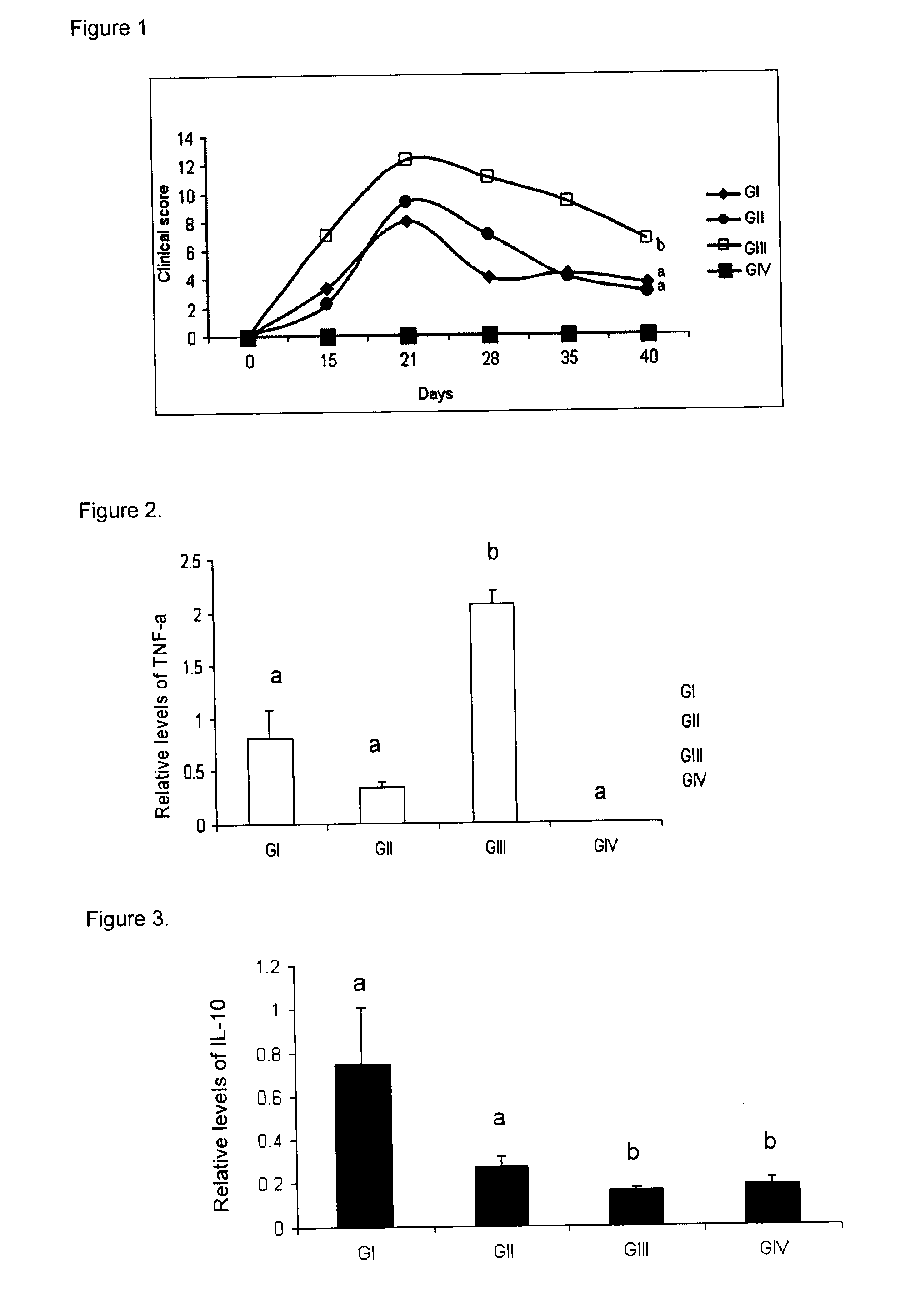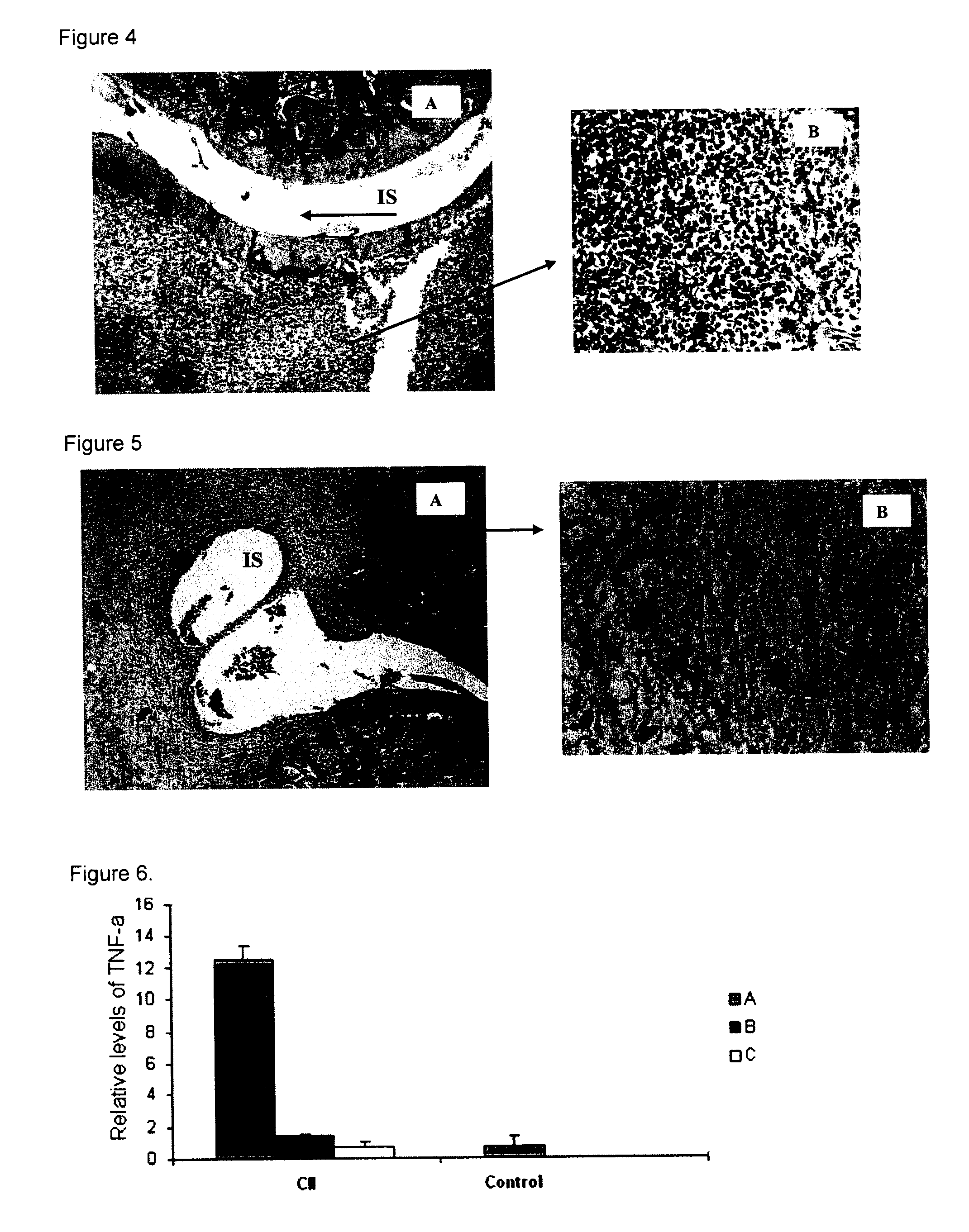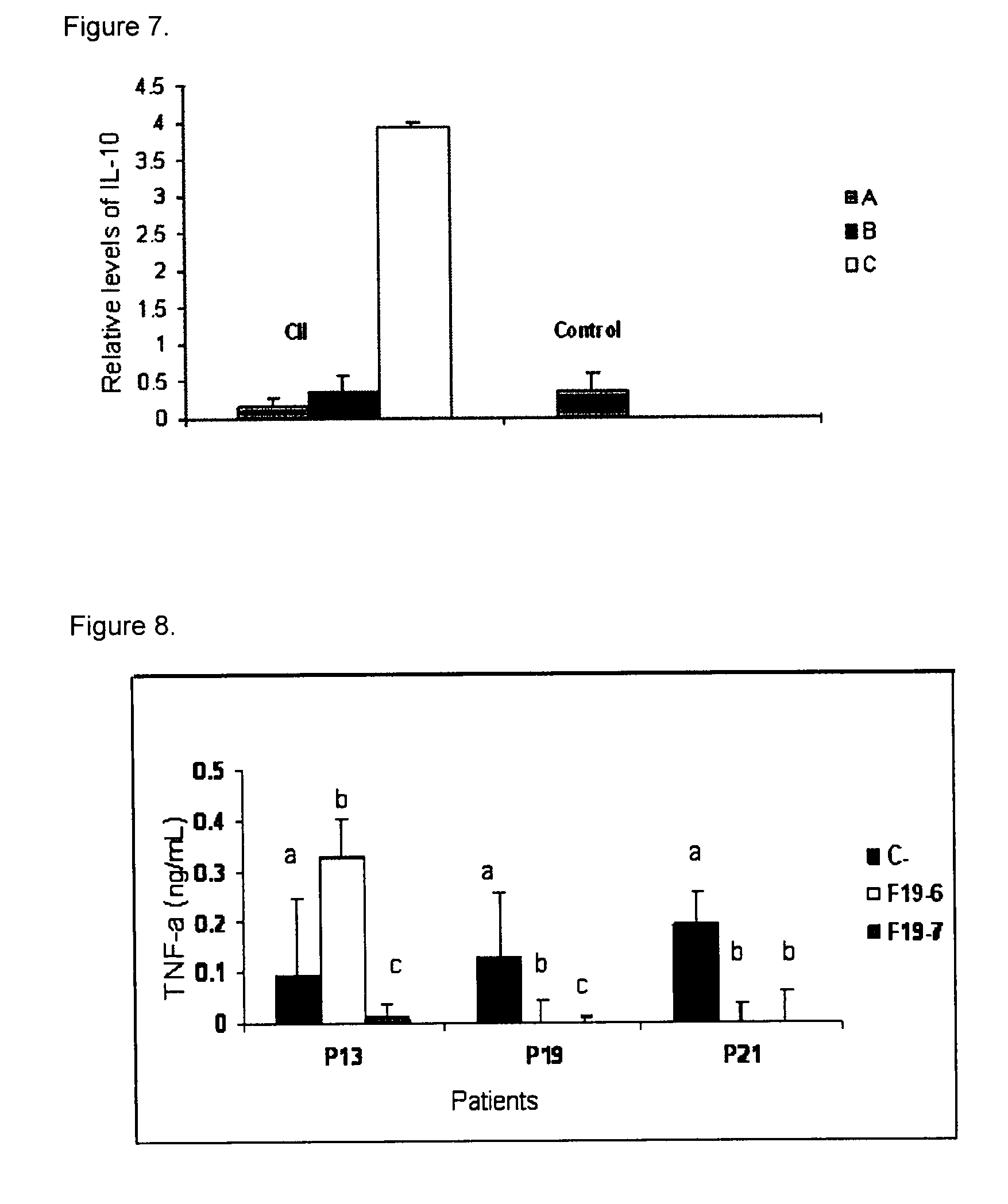Peptides and apl-type derivatives of hsp60 and pharmaceutical compositions
a technology of hsp60 and apl-type derivatives, which is applied in the direction of animal/human peptides, peptide sources, peptide/protein ingredients, etc., can solve the problems of expensive medications, partial activation or even inactivation of t cells in patients with these drugs, and serious infections that are fatal
- Summary
- Abstract
- Description
- Claims
- Application Information
AI Technical Summary
Benefits of technology
Problems solved by technology
Method used
Image
Examples
example 1
Peptides of the hHsp60 Presented by Human HLA
[0079]The selected peptides of the hHsp60 were those reported as epitopes of human T cells by the used programs: SYFPEITHI (Hans-Georg Rammensee, Jutta Bachmann, Niels Nikolaus Emmerich, Oskar Alexander Bachor and Stefan Stevanovic. 1999. Immunogenetics 50:213-219. SYFPEITHI: database for MHC ligands and peptide motifs. (access via: http: / / www.uni-tuebingen.de / uni / kxi / )) and ProPred (Singh, H. and Raghava, G. P. S. 2001. ProPred: Prediction of HLA-DR binding sites. Bioinformatics, 17(12):1236-37).
[0080]The sequences corresponding to these peptides are shown in Table 1.
TABLE 1Sequence of hHsp60 peptides presented by humanHLA.Positionin thePeptidessequenceAmino acid SequenceE18-1255-75MGPKGRTVIIEQSWGSPKVTK(SEQ. ID. NO: 1)E18-383-110SIDLKDKYKNIGAKLVQDVANNTNEEAG(SEQ. ID. NO: 2)
example 2
Peptide of the hHsp60 for Epitope of Lewis Rats
[0081]Starting from the sequence of hHsp60 we select a peptide that binds to the molecule of MHC-II of rat RT1.BI according to the sequence motif described in the database SYFPEITHI (Hans-Georg Rammensee, Jutta Bachmann, Niels Nikolaus Emmerich, Oskar Alexander Bachor, Stefan Stevanovic. 1999. Immunogenetics 50:213-219. SYFPEITHI: database for MHC ligands and peptide motifs. (access via: http: / / www.uni-tuebingen.de / uni / kxi / )).
[0082]A program that analyzes all peptides of 9 amino acids was designed to search those that fulfill with the motif. We also included variants, which in one of the positions were not included the described residuals as anchorage or preferentials.
[0083]The sequence corresponding to one of these peptides (F19-6) it is shown in the Table 2.
TABLE 2Sequence of hHsp60 peptide selected for rats.Position in thePeptidesequenceAmino acid SequenceF19-6518-533IIDPTKVVRTALLDAA(SEQ. ID. NO: 3)
example 3
Design of APL with Modifications in the Amino Acids Involved in the Binding to the MHC
[0084]Starting from the peptides selected in examples 1 and 2, we have modified the positions involved in the binding to the specific MHC (positions 1, 3, 4, 6, 8 or 9) trying to increase the affinity of the peptide for the HLA molecule. It was searched for the optimal residuals in each one of these positions that could be anchorage residuals if the peptide was selected for methods that use binding motifs (SYFPEITHI) or residuals able to increase the score of the peptide as MHC ligand if the selection of the peptide was made using another algorithm type (ProPred).
[0085]As a result of these analyses, the peptide E18-12 has been substituted in the positions 1 to 7 by each one of the amino acids that are specified as follow:
MGPKGRTVIIEQSWGSPKVTK(SEQ. ID. NO: 1) 1 2 34 56 7
[0086]it is substituted in the position 1 for: A, F, I, L, M, V, W, or Y
[0087]position 2 for: A, D, E, F, G, H, I, K, L, M, N, ...
PUM
| Property | Measurement | Unit |
|---|---|---|
| weight | aaaaa | aaaaa |
| volume | aaaaa | aaaaa |
| volume | aaaaa | aaaaa |
Abstract
Description
Claims
Application Information
 Login to View More
Login to View More - R&D
- Intellectual Property
- Life Sciences
- Materials
- Tech Scout
- Unparalleled Data Quality
- Higher Quality Content
- 60% Fewer Hallucinations
Browse by: Latest US Patents, China's latest patents, Technical Efficacy Thesaurus, Application Domain, Technology Topic, Popular Technical Reports.
© 2025 PatSnap. All rights reserved.Legal|Privacy policy|Modern Slavery Act Transparency Statement|Sitemap|About US| Contact US: help@patsnap.com



